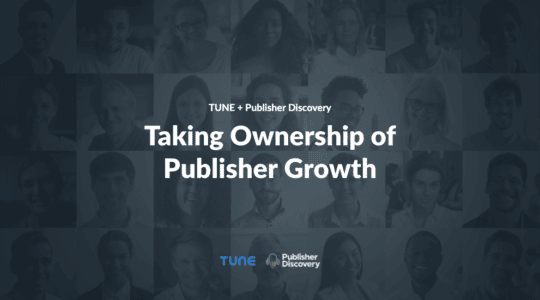
Photo brawpixel on Unsplash
You’ve heard us say it before: all marketing should be measured based on performance. It’s the only way to truly know how effective campaigns are, which partners are best, and how to make the best use of marketing dollars. As marketing partnerships continue to grow in popularity, we wanted to give a quick refresher as to what exactly performance marketing is, what it looks like in the real world, and what’s most important to measure if you’re just starting out.
What Is Performance Marketing?
Performance marketing is a broad term for any marketing strategy in which an advertiser pays only for measurable results. In performance marketing, advertisers pay after a specific action is completed (such as a click, sale, or sign up), instead of in advance for no guarantee of success. This is why it’s also referred to as performance-based advertising: you only pay when your ad “performs.” For a more in-depth explanation and examples, see our Intro to Performance Marketing article on TUNE Help.
Now, if you’re advertiser, you may be wondering, Why isn’t all marketing performance marketing? It seems like a win-win for everyone involved! Good question.
In the past, a large chunk of marketing was speculative. Far too often, major brand campaigns were plastered across billboards or televisions with a general idea of how many people would see the ads, but without any exact details as to how many impressions, leads, or clicks the advertising actually led to. That was the norm.
With the development of the internet, the digital revolution, and the rise of mobile, a whole new era of advertising opened up. Actions were now trackable, transparent, and measurable. Thus, performance marketing was born. Yet not everyone was ready for the logistical changes that came with it, the technical requirements of the field, or the conceptual strategies needed for success.
This is where we are today. Some brands and partners are still not prepared (or willing) to take on performance advertising. However, those who have are making the case for its steady growth and adoption.
Types of Performance Marketing
There are several types of marketing that fit under the performance umbrella. One of these subsets of performance marketing is affiliate marketing, in which networks and individual publishers use a unique affiliate link to point audiences to an advertiser’s product or website.
Another type of performance marketing is referral marketing, in which consumers share a promotion for a brand or service with their personal network of connections, usually in exchange for a discount, free product, or credit.
And, of course, performance marketing also includes partner marketing, a combination of several subsets that leverages the skills and insights of independent professional marketers to acquire and engage customers. While the definition of this subset and “marketing partner” can be broad, the goal remains singular: drive incremental users and profit.
Although popular, the three subsets above are far from the only kinds of performance marketing available today. We’ll go more in-depth with these and others in future posts, so be sure to check back later for more on the topic.
Key Performance Marketing Terms
Let’s get clear on a few terms you’ll hear often in performance marketing related to the metrics advertisers can measure, and the ways they can pay for those results.
Goal Metrics
Some examples of the KPIs you can target with performance marketing:
- Customer acquisition
- Traffic quality
- Marketing efficiency
- Lead generation
- Sales
- Revenue
- Customer retention
- Brand awareness
Payment Models
Common methods for delivery of and payment for performance:
- CPM: Cost per thousand (mille) impressions. Many online ads are sold based on the cost for showing the advertisement 1,000 times. The downside here is that, while you can measure the number of impressions, eyeballs don’t always translate to sales.
- CPC: Cost per click is a step above impressions. With this metric, you not only have an idea of how many people see your advertisement, but are actually interested enough to click on it.
- CPL: Even better than cost per click is cost per lead, which pays a flat fee per lead acquired. This measures what an advertiser spends to not only get people to see and click their advertisement, but to become a lead by filling out a sign-up form or providing some other sort of information.
- CPS: Cost per sale is similar to cost per lead, but usually is paid as a percentage of the sale amount. This measures the value of an ad and a customer, as cost per sale can provide advertisers with important data on customer lifetime value and average order value.
- CPA: The holy grail is cost per action, also known as cost per conversion (and sometimes called cost per acquisition). These actions can be installs, purchases, registrations, subscriptions, form fills, or some other action. At this point, you know what it costs to get consumers through your entire funnel — from seeing an advertisement (an impression) to clicking (CPC) then filling out a lead form (CPL) and making a purchase (CPS). When working with mobile-specific advertisements, it’s common to see Cost per Install (CPI) used instead of CPA, but they are basically the same thing: a flat fee per conversion, which in this case is an install.
Aligning Performance and Partnerships
Performance marketing continues to climb at an impressive 10% each year. And Forrester predicts that will continue for at least the next five years. So whether you’re just getting started in partner marketing or are refreshing your knowledge for the new year, TUNE is here to help with the industry’s most flexible white label platform. Request your consultation today.
Want more info first? Download our Ultimate Guide to Partner Marketing, the industry’s only step-by-step guide to planning, building, and managing a successful partner program.
Author
Becky is the Senior Content Marketing Manager at TUNE. Before TUNE, she handled content strategy and marketing communications at several tech startups in the Bay Area. Becky received her bachelor's degree in English from Wake Forest University. After a decade in San Francisco and Seattle, she has returned home to Charleston, SC, where you can find her strolling through Hampton Park with her pup and enjoying the simple things in life.




Leave a Reply
You must be logged in to post a comment.